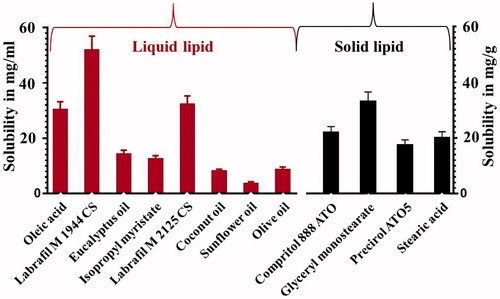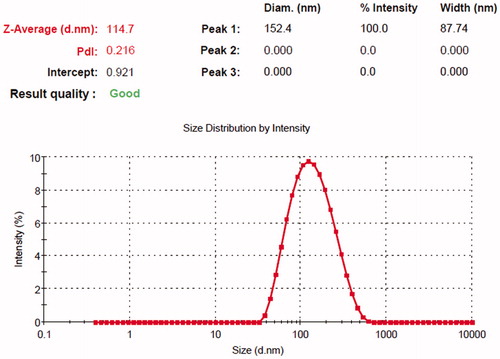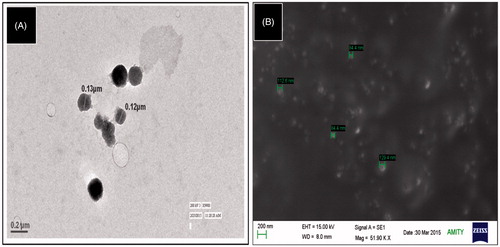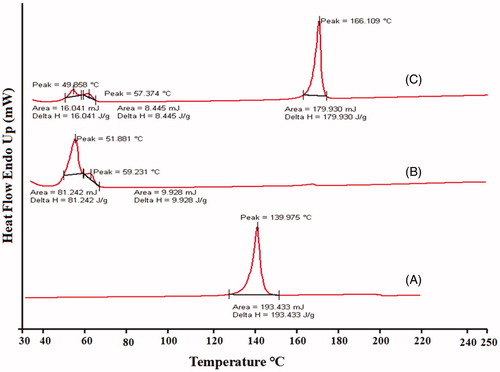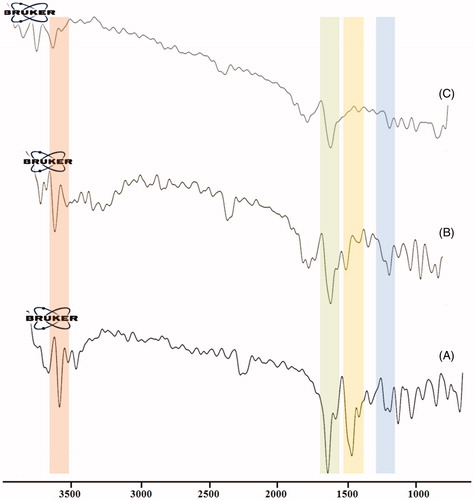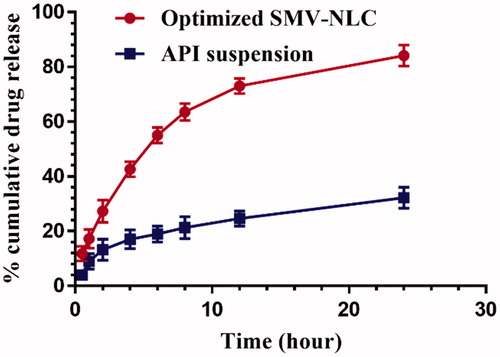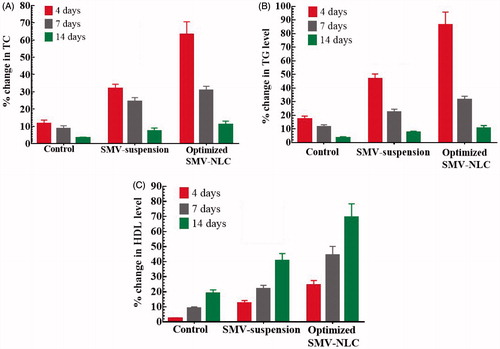Figures & data
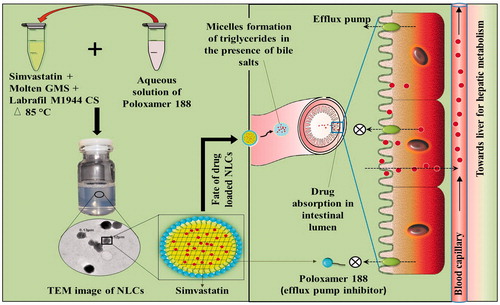
Table 1. Coded independent and dependent variables with their lower and higher limit.
Table 2. Box–Behnken experimental design of SMV-loaded NLC and evaluated response parameters (n = 3).
Table 3. Transmittance of NLC formulations produced by different surfactants (n = 3).
Table 4. ANOVA Results for responses Y1, Y2 and Y3 obtained from experimental design response.
Figure 2. 3 D-response surface plots showing effect of independent variables on (A) Particle size, (B) PDI and (C) entrapment efficiency.
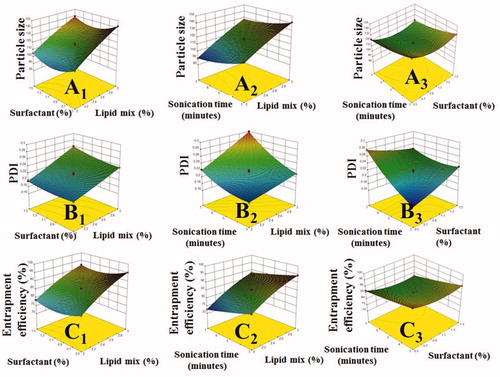
Figure 3. Linear correlation plots (A, C, E) between actual and predicted values and the corresponding residual plots (B, D, F) for particle size, PDI and entrapment efficiency.
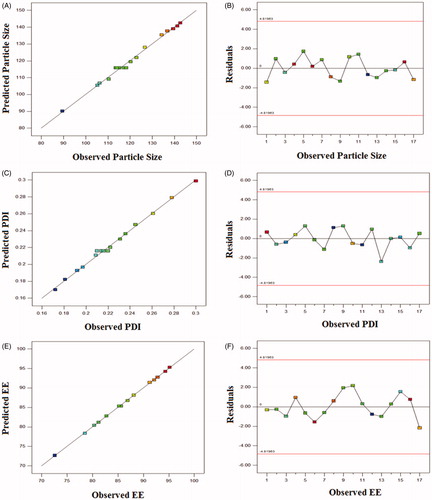
Table 5. Optimized levels of independent variables and their corresponding predicted and observed responses.

